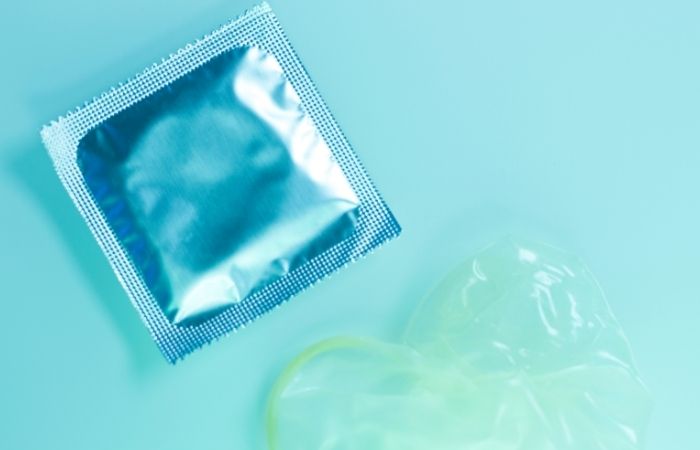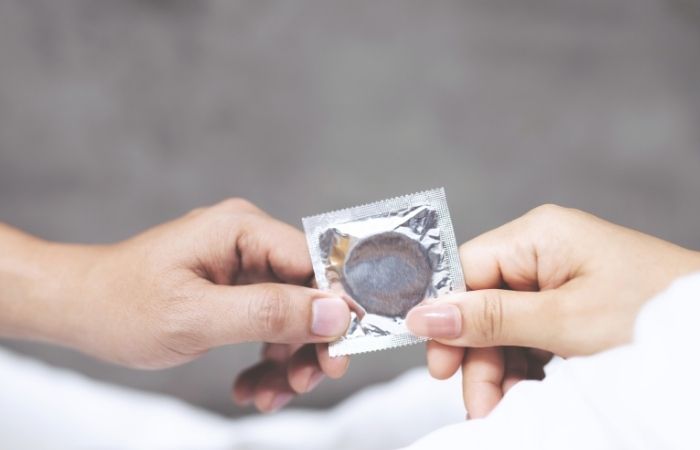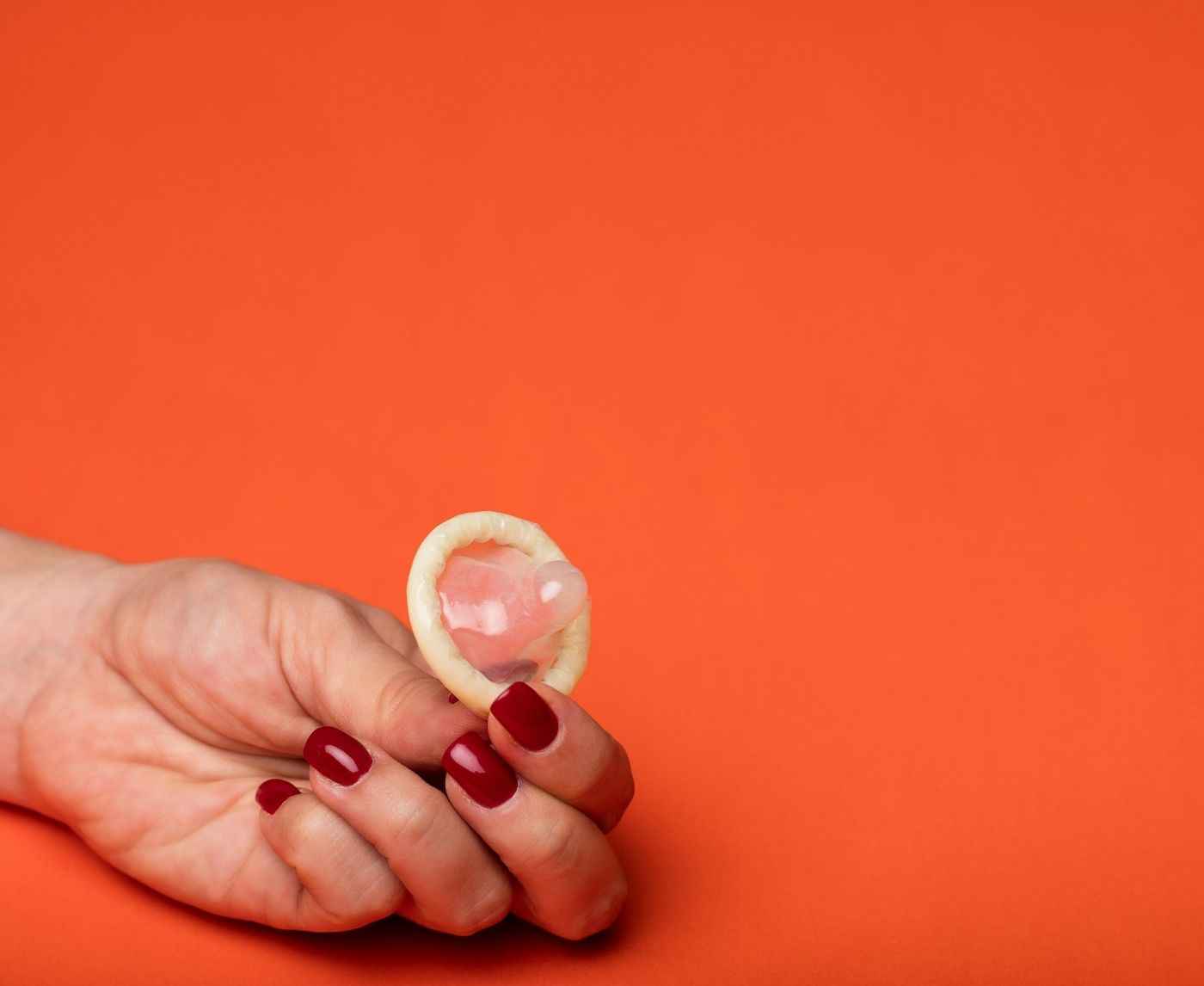The Most Dangerous Sex Act for STDs (And How to Stay Safe)
Quick Answer
Condoms reduce the risk of many STDs, but they don’t make sex 100% safe. Skin-to-skin infections like herpes, HPV, and syphilis can still spread even with condom use, especially during oral sex or if lesions appear outside covered areas. Testing is the only way to know for sure.
Do Condoms Prevent Everything?
Condoms are supposed to be the heroes of sexual health. A thin layer of latex or polyurethane, standing between you and everything you don’t want: chlamydia, gonorrhea, HIV, herpes, warts, pregnancy, regret. They’ve become the shorthand for responsibility. You use a condom, you’re covered. You don’t; you’re reckless. That’s the binary. Simple, clean, false.
Because here’s what most people don’t realize: condoms are good, but they’re not perfect. They dramatically reduce your risk for many STDs, especially the ones transmitted through fluids. But they’re far less effective against skin-to-skin infections like herpes, HPV, and syphilis.
And we’re not perfect people.
In the real world, condoms get used late or not at all. People forget to put them on until after a little “just the tip” action. They reuse them. They don’t check the expiration date. They don’t know that oil-based lube breaks latex or that air bubbles inside the wrapper can mean damage. And yet, they walk away thinking they were protected.
This isn’t about trashing condoms. They matter. They save lives. But pretending they’re bulletproof only sets people up to fail harder. If you’re going to use condoms, and you should, you need to know what they actually do, and what they can’t do.

People are also looking for: Can I use two condoms for extra safety?
What Condoms Really Prevent, And What Slips Through
Condoms are extremely effective, but they’re also misunderstood. Most people think of them as a universal shield. But the truth is more complicated. The type of STD matters. The type of contact matters. The way you use the condom matters. Let’s break it down.
What Condoms Are Great At Preventing
- HIV: Condoms reduce the risk of HIV transmission by about 90 to 95% when used correctly and consistently.
- Chlamydia and Gonorrhea: Spread through fluids. Condoms significantly reduce the risk by 80 to 90%.
- Trichomoniasis: Condoms help a lot here too. Not perfect, but effective.
- Hepatitis B: Condoms lower the risk significantly, though vaccination remains the best protection.
What Condoms Don’t Fully Block
Herpes (HSV-1 and HSV-2): Herpes spreads through skin-to-skin contact. Condoms help, especially during outbreaks, but they don’t eliminate the risk.
HPV: Skin contact is enough. Condoms offer partial protection.
Syphilis: If the sore is outside the condom’s coverage area, it can still spread.
Pubic Lice and Scabies: These are parasites and condoms don’t help.
Molluscum Contagiosum: Spreads through contact. Condoms won’t stop it.
So what’s the takeaway?
Condoms are amazing at blocking fluid-transmitted STDs. But for skin-based infections, you need more than latex.
Check Your STD Status in Minutes
Test at Home with Remedium7-in-1 STD Test Kit

 For Men & Women
For Men & Women Results in Minutes
Results in Minutes No Lab Needed
No Lab Needed Private & Discreet
Private & DiscreetOrder Now $129.00 $343.00
For all 7 tests
Why Condom Failures Happen (and What People Get Wrong About Using Them)
Most condom failures aren’t about the latex. They’re about human error. People use them wrong. Or late. Or not at all.
So where does it all go wrong?
- Put on late: Even pre-ejaculate can carry STDs.
- Air bubbles and tears: Caused by incorrect application or wrong lube.
- Wrong size: Too tight = breakage. Too loose = slippage.
- Reusing condoms: Never do this. Ever.
- Expired condoms: Latex degrades. Check the date.
- Removing early: Pulling out before you're done exposes you to risk.
So how do you fix it?
Use condoms correctly every time. Store them properly. Use water- or silicone-based lube. Practice if needed.

People are also looking for: What’s the riskiest STI at a sex party?
How Condoms Compare to Other Forms of STD Prevention
Vaccines: The Long-Term Armor
HPV and Hepatitis B vaccines offer protection where condoms can’t. They don’t rely on behavior — they’re built-in defense.
Testing: The Truth Serum
You can’t rely on condoms alone. Regular STD testing is critical, especially for infections without symptoms.
You can test in clinics or use at-home test kits.
Communication: The Protection No One Talks About
Talk to your partners. Ask about their status, testing history, and whether they’ve been vaccinated. Silence won’t protect you — honesty will.
Check Your STD Status in Minutes
Test at Home with Remedium7-in-1 STD Test Kit

 For Men & Women
For Men & Women Results in Minutes
Results in Minutes No Lab Needed
No Lab Needed Private & Discreet
Private & DiscreetOrder Now $129.00 $343.00
For all 7 tests
What Happens When People Think Condoms Are Enough
No one expects to catch an STD. But overconfidence in condoms is risky. They’re a tool, not a guarantee.
“I thought condoms covered everything.” – Tyler, 24
“We used a condom start to finish. But he had a cold sore, and we kissed. I got herpes. No one told me skin contact spreads it.”
“We were exclusive. And still, I ended up with HPV.” – Rachel, 29
“We used condoms often, but not always. My Pap was abnormal. I tested positive for HPV. I had no idea condoms didn’t fully prevent it.”
“I didn’t realize pre-cum could carry STDs.” – Malik, 21
“We used condoms eventually, not always from the start. I tested positive for chlamydia and gonorrhea. I thought I was safe.”
These stories are common. The takeaway? Condoms reduce risk — they don’t erase it.

People are also looking for: How often should poly people get tested?
FAQs
1. Are condoms 100% effective?
No. They’re highly effective against fluids, less so against skin-based STDs.
2. Can I still get an STD if the condom doesn’t break?
Yes. Any uncovered skin can transmit infections.
3. Should I use two condoms?
No. Friction increases breakage risk.
4. Do condoms protect against oral STDs?
Only if used — and most people don’t use them during oral sex.
5. How much does proper use affect effectiveness?
A lot. Perfect use = 98%. Typical use = 85%.
6. Can STDs pass through latex?
No — but breakage or exposure to skin can let them through.
7. Do I need testing if I always use condoms?
Yes. They reduce risk, not eliminate it.
8. Are female/internal condoms effective?
Yes. They offer similar protection and cover more skin.
9. Can you be allergic to condoms?
Yes. Try polyurethane or polyisoprene if latex causes reactions.
10. Should I trust someone who says “I’m clean”?
Not without recent test results. Talk is not proof.
Check Your STD Status in Minutes
Test at Home with Remedium3-in-1 STD Test Kit

 For Men & Women
For Men & Women Results in Minutes
Results in Minutes No Lab Needed
No Lab Needed Private & Discreet
Private & DiscreetOrder Now $69.00 $147.00
For all 3 tests
The Truth About Condoms, and What You Do Next
Condoms work. But they’re not a shield against everything. They don’t think for you. They don’t guarantee safety. They’re part of a strategy, not the whole solution.
You can still get herpes, HPV, or syphilis even with proper use. That’s why education, testing, vaccines, and honesty matter just as much.
Protection isn’t a product — it’s a plan. And now you have one.










